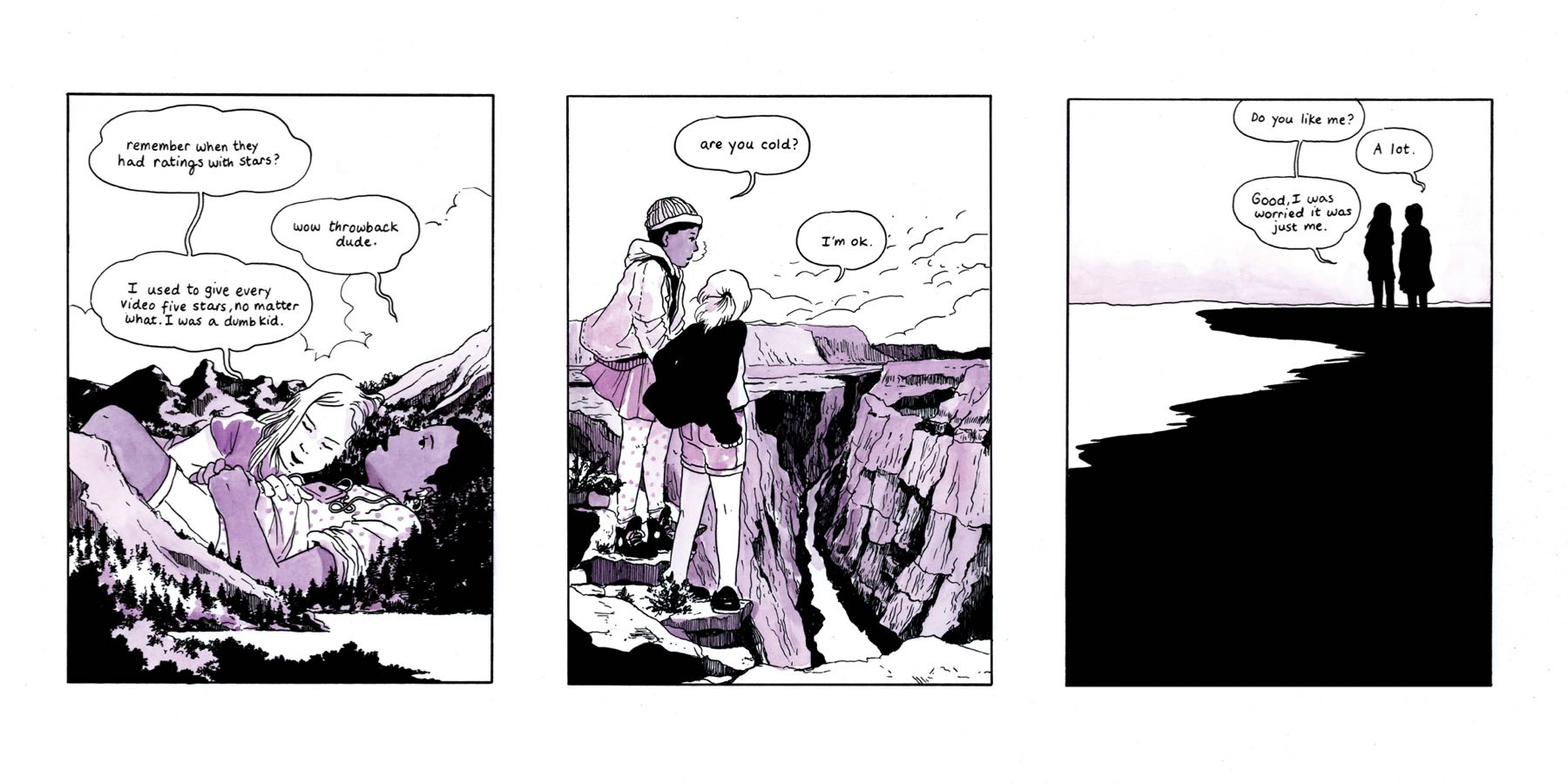I Love This Part
— Terry Abrahams
Tillie Walden’s I Love This Part is a quiet coming-of-age narrative that follows two young girls first realizing they have feelings for each other beyond what one might constitute as friendship. That’s it. That’s all. Simple—and yet so impossibly complex it’s a wonder Walden managed to condense such a tale to one beautifully, terribly, wonderfully bittersweet book.

The girls’ story is told in single-panel pages that include little to no dialogue at all. Some dialogue is never even spoken, only exchanged via text message, as indicated by illustrated messenger chat bubbles. The two girls are never named, nor aged—we as readers can, however, determine that they are on the cusp of entering their tumultuous teenage years, perhaps twelve or thirteen. In the scheme of things, these girls are young—invisible—and if we felt particularly cruel (or, perhaps, honest), we might say they are insignificant. But Walden positions them as anything but. Placed alongside and often dwarfing mountains, skyscrapers, and vast landscapes, the girls and their developing feelings for one another are the undeniable focus. The human figures contrasting.
Walden’s poetic abilities lie in her pacing. Pacing on a single page, a single panel, where one image is the sole focus, is incredibly difficult to effectively maintain. But Walden’s attention to atmosphere and detail make her efforts look effortless. In reality, they are obviously anything but.

Even when the panels contain text, they are fragments of a larger whole, a whole that is never fully revealed. We, as readers, are witnessing the end of this relationship. The girls, despite their feelings for one another, drift apart. What was before—the days, weeks, years, perhaps, that saw the development of this relationship between our protagonists—is in the distance. Like the landscapes they drift through and around and often overwhelm, these two girls are in the process of changing. Eroding, growing, shifting, flowing—as much as we might want them to linger, they cannot. However, readers can, and by doing so, they are rewarded. The intricate detail in many of the panels provides a treat for even the tiredest of eyes. Despite the sharply-imagined architecture or the overwhelming dark expanse of a sandy shore, nothing in Walden’s work is jarring. The text flows with a rhythm that matches the readers own slow sadness as they realize that this is a story that cannot—will not—end on a strictly happy note.
The impact of Walden’s work is lasting. A single musical note shared between our two protagonists drifts off to a tree-lined pathway, an empty classroom, and, finally, to an open field. There, the narrative comes to a close. The quiet ending did not leave me wanting more, but it left me with the book itself open in front of me for quite some time. The emotions throughout, though subtle, become palpable here, when we must face the truth that was apparent at the start of this story: everything, always, comes to an end—though what was experienced will never really be forgotten.
Perhaps this ending is somewhat disheartening. Or maybe it’s profoundly hopeful. Regardless, I loved that part.